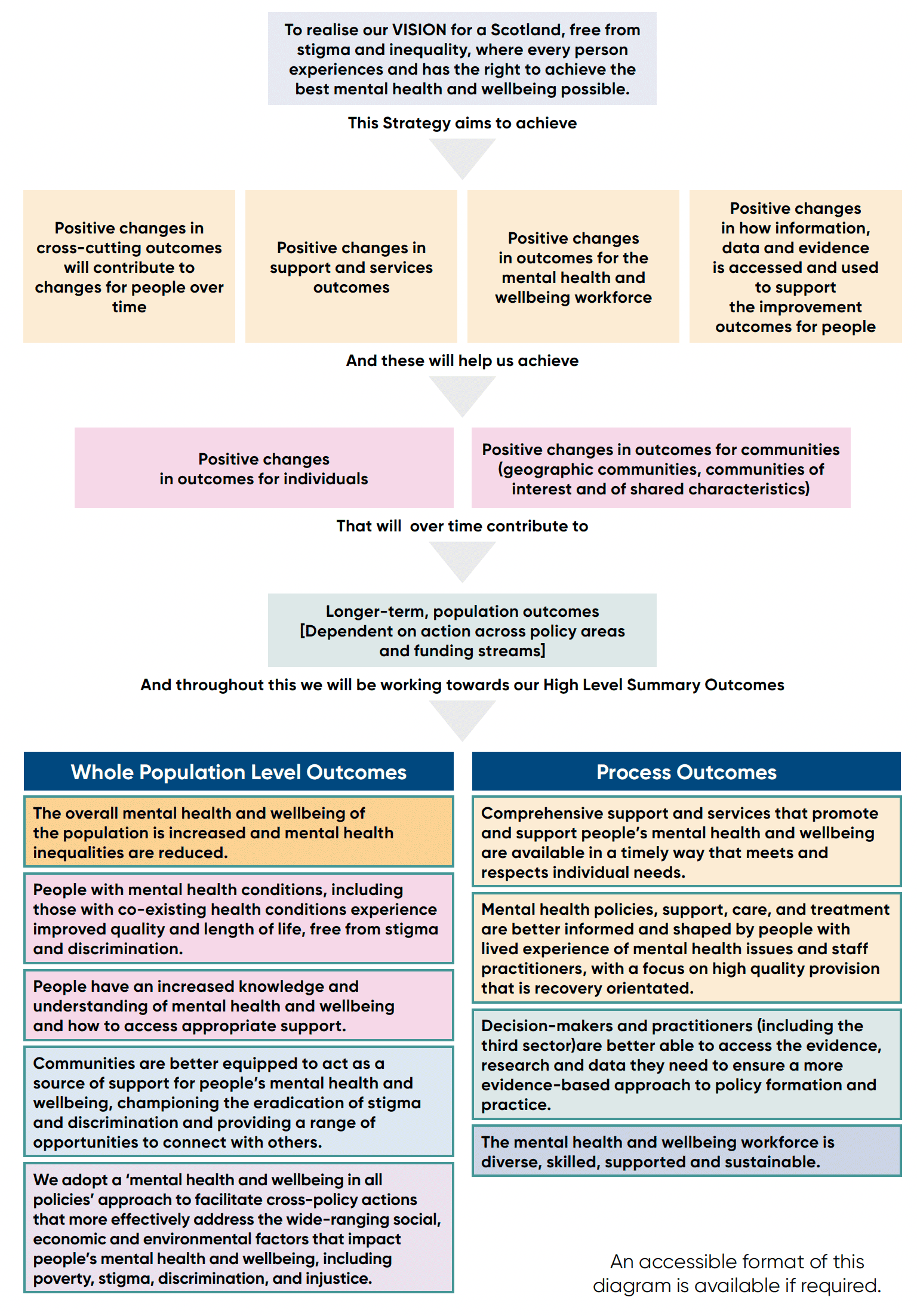Mental health and wellbeing strategy: executive summary
Executive summary of the new mental health and wellbeing strategy, laying out our vision for improving mental health and wellbeing in Scotland.
Outcomes
We want to be clear about what this Strategy is trying to achieve. Specifically, we want to lay out the changes that are needed and describe how the actions in the forthcoming Delivery Plan will lead to that change happening in a sustainable way. To do this, we have developed a set of outcomes. These are the differences or changes that we want to see as a result of this Strategy.
These outcomes are intended to be for the whole population of Scotland. People will have different needs and will require different support, care and treatment options to improve their personal outcomes.

Graphic text below:
To realise our Vision for a Scotland, free from stigma and inequality, where every person experiences and has the right to achieve the best mental health and wellbeing possible.
This Strategy aims to achieve
Positive changes in cross-cutting outcomes will contribute to changes for people over time
Positive changes in support and services outcomes
Positive changes in outcomes for the mental health and wellbeing workforce
Positive changes in how information, data and evidence is accessed and used to support the improvement outcomes for people
And these will help us achieve
Positive changes in outcomes for individuals
Positive changes in outcomes for communities (geographic communities, communities of interest and of shared characteristics)
That will over time contribute to
Longer-term, population outcomes [Dependent on action across policy areas and funding streams]
And throughout this we will be working towards our High Level Summary Outcomes
Whole Population Level Outcomes
The overall mental health and wellbeing of the population is increased and mental health inequalities are reduced.
People with mental health conditions, including those with co-existing health conditions experience improved quality and length of life, free from stigma and discrimination.
People have an increased knowledge and understanding of mental health and wellbeing and how to access appropriate support.
Communities are better equipped to act as a source of support for people’s mental health and wellbeing, championing the eradication of stigma and discrimination and providing a range of opportunities to connect with others.
We adopt a ‘mental health and wellbeing in all policies’ approach to facilitate cross-policy actions that more effectively address the wide-ranging social, economic and environmental factors that impact people’s mental health and wellbeing, including poverty, stigma, discrimination, and injustice.
Process Outcomes
Comprehensive support and services that promote and support people’s mental health and wellbeing are available in a timely way that meets and respects individual needs.
Mental health policies, support, care, and treatment are better informed and shaped by people with lived experience of mental health issues and staff practitioners, with a focus on high quality provision that is recovery orientated.
Decision-makers and practitioners (including the third sector)are better able to access the evidence, research and data they need to ensure a more evidence-based approach to policy formation and practice.
The mental health and wellbeing workforce is diverse, skilled, supported and sustainable. Logic Model Showing the Achievement of Strategy Outcomes An accessible format of this diagram is available if required.
Contact
There is a problem
Thanks for your feedback